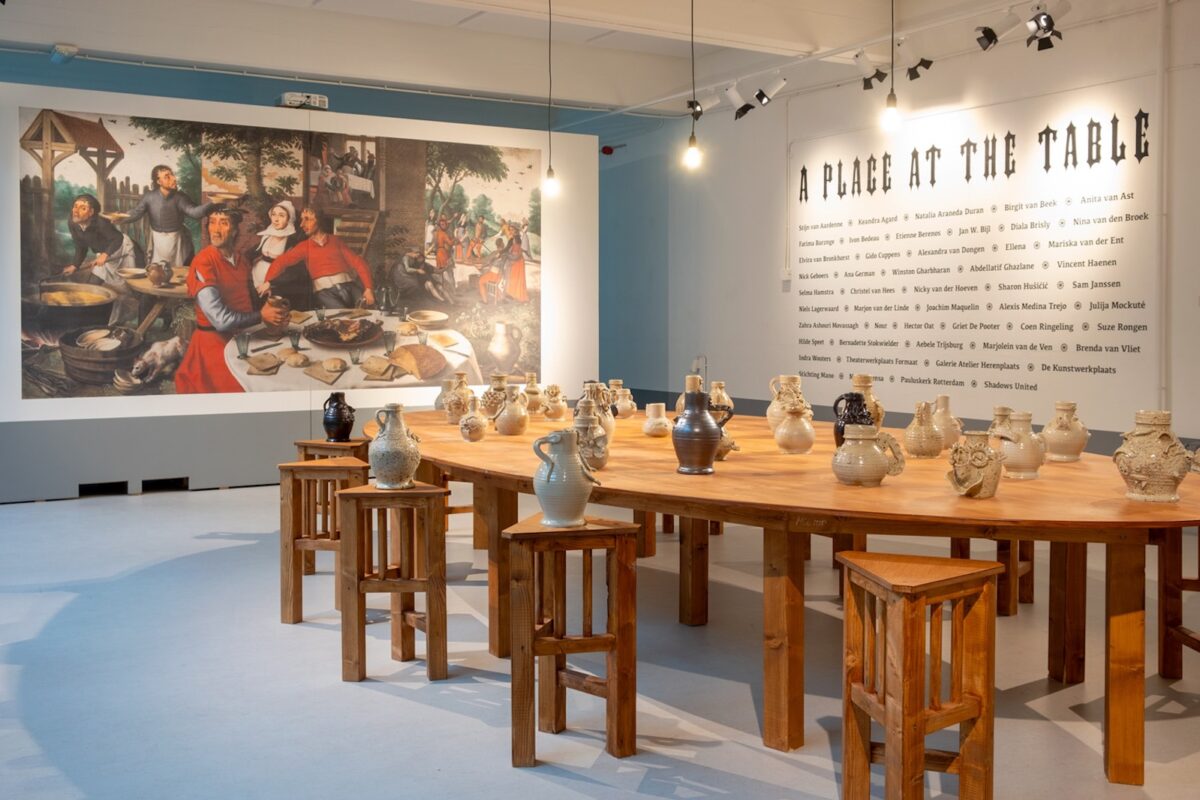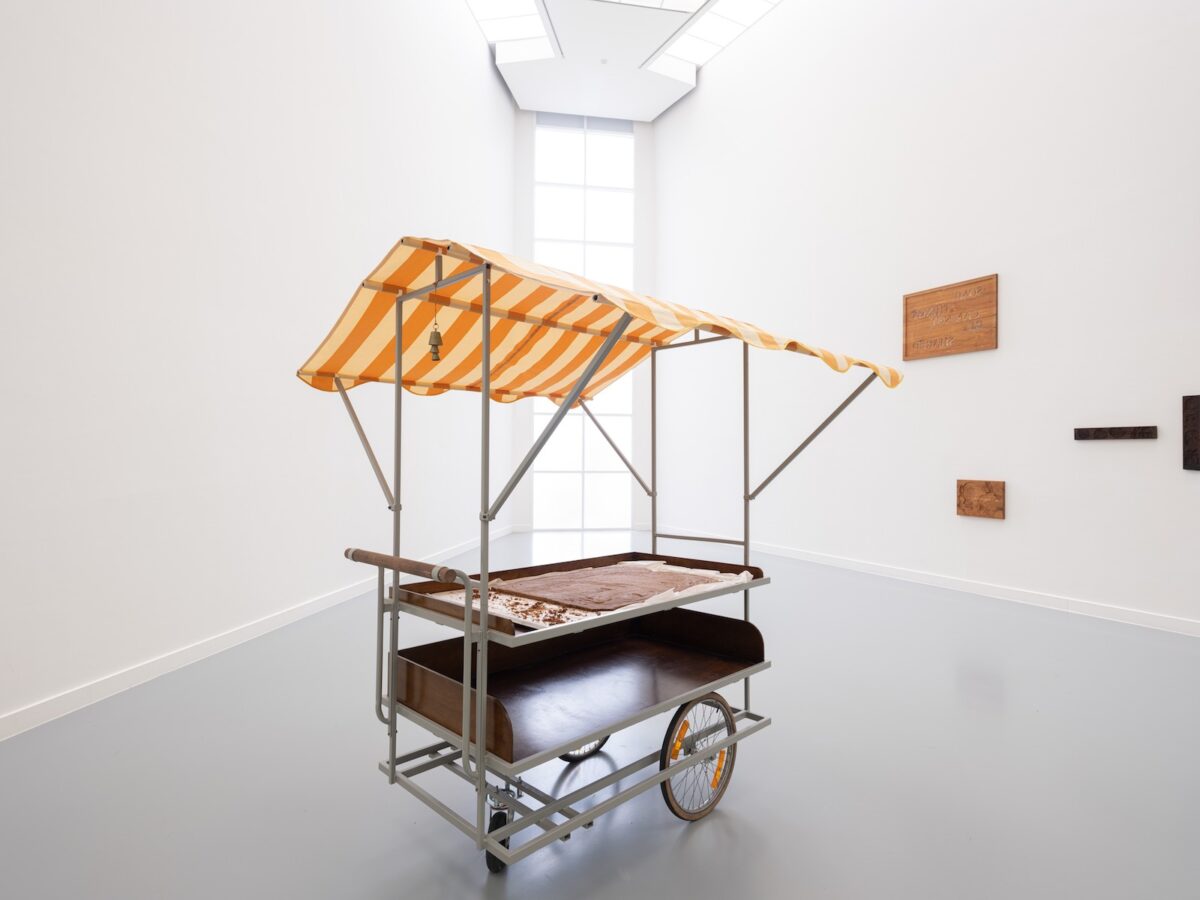How do you describe your own art practice?
I would describe my practice as a collection of community generators with a strong folkloristic quality. I hope that when people think of my work, they remember it as generous. I hope that the experiences I offer spark fantastic, new stories. I try to smuggle some magic and playfulness into their everyday lives. No bold flashy moves here, I’d rather sneak in through the familiar and change the perspective slightly. Whether it is through the enchantment of a choir, the sharing of a speculoos sculpture, or participating in a playful spinning top ritual, these moments are shared with others and become social stages for interaction.

ceramic spinning tops, rope
Which question or theme is central in your work?
There was a moment in my art practice when I began to move away from autonomous and static artworks and towards more active and social ways of distributing my work and physically being a part of it. I allowed myself to mix fictionalised personal histories and memories into my practice to make it more relatable. With these new ingredients, I began to explore the possibilities of performative objects and storytelling.
By studying the structure and strength of folk tales and urban legends, I learned how they spread. They are updated and personalised each time they are passed on. This helped me to question ‘the original’ and even my own originality as an artist, which was quite liberating. I realised that my stories are transformed, combined or mutated forms of existing narratives that have always been there, like Joseph Campbell’s monomyth.
Also, the social fabric really fascinates me. Strengthening it is a key component of my projects. How does it work? What makes it stronger? What can we learn from the past, and what do we need in the future?
Maybe social fabric is my main medium, hidden deep in the diversity of my interdisciplinary practice.

face, clay.
Photo by Nick Geboers
What was your first experience with art?
Being part of the Harcorde punk scene since the early 2000s has really taught me a lot about community, DIY, supporting each other and of course art and music. I remember so many people volunteering, making food for touring bands, offering places to sleep, offering rides, cleaning up after the show. I remember arriving early to see all the bands, not just the headliners. I remember all the homemade zines, posters, shirts. I remember playing and having so much fun and it was so free and liberating and warm because you were among friends. A lot of the things I picked up then are still deeply embedded in the way I work.

36 ceramic face jugs
Photo by Nick Geboers
What is your greatest source of inspiration?
That would be stories, anecdotes and folklore. I’m absolutely obsessed. At the moment I am listening to a podcast called “Weird Studies” and it’s opening up many new paths for me to explore.

copyright M HKA/clinckx
What do you need in order to create your work?
Time is key. Other than that, I just need to be inspired and go into this obsessive research mode. Nothing is needed materially, that’s the beauty of it. I just hop on a new adventure and see where it takes me.

Walnut wood, dough. Copyright M HKA/clinckx
What work or artist has most recently surprised you?
Seeing Pierre Huyghe’s show Liminal at Pinault’s Punta della Dogana left a deep impression on me. It was not a single work, but the culmination of everything that really got to me. This is not the first time this artist has shaken me to my core. He blew me away at Skulptur Projekte Münster with a very complete project “After Alife Ahead” that stayed with me for months and almost made me give up being an artist. He also managed to captivate me with the video “Human Mask” in a group show “Sanguine/Bloedrood” at M HKA Antwerp.
A few months ago, a friend recommended reading “A Voyage to Extremes: Selected Spiritual Writings”, a book by Jeffrey Vallance. What a trip. I’m so sad that it had to end. Being new to Jeffrey Vallance and his art, it made me want to learn more after reading only a few pages. I am now a fan. This book showcases Vallance’s writing skills, artistic power, research focus, marvelous associations and last but not least: his top quality humor.
Jeffrey! I will try to visit you in your dreams! If it works, get in touch.
Ignace Cami – RE: ANKER, 2023 at M HKA Antwerp
choir, 13 jackets, phonetic texts, piano, guitar
Publications
You can find the publications by A Place at the Table and I’ll explain everything to the geese by Ignace Cami here.




